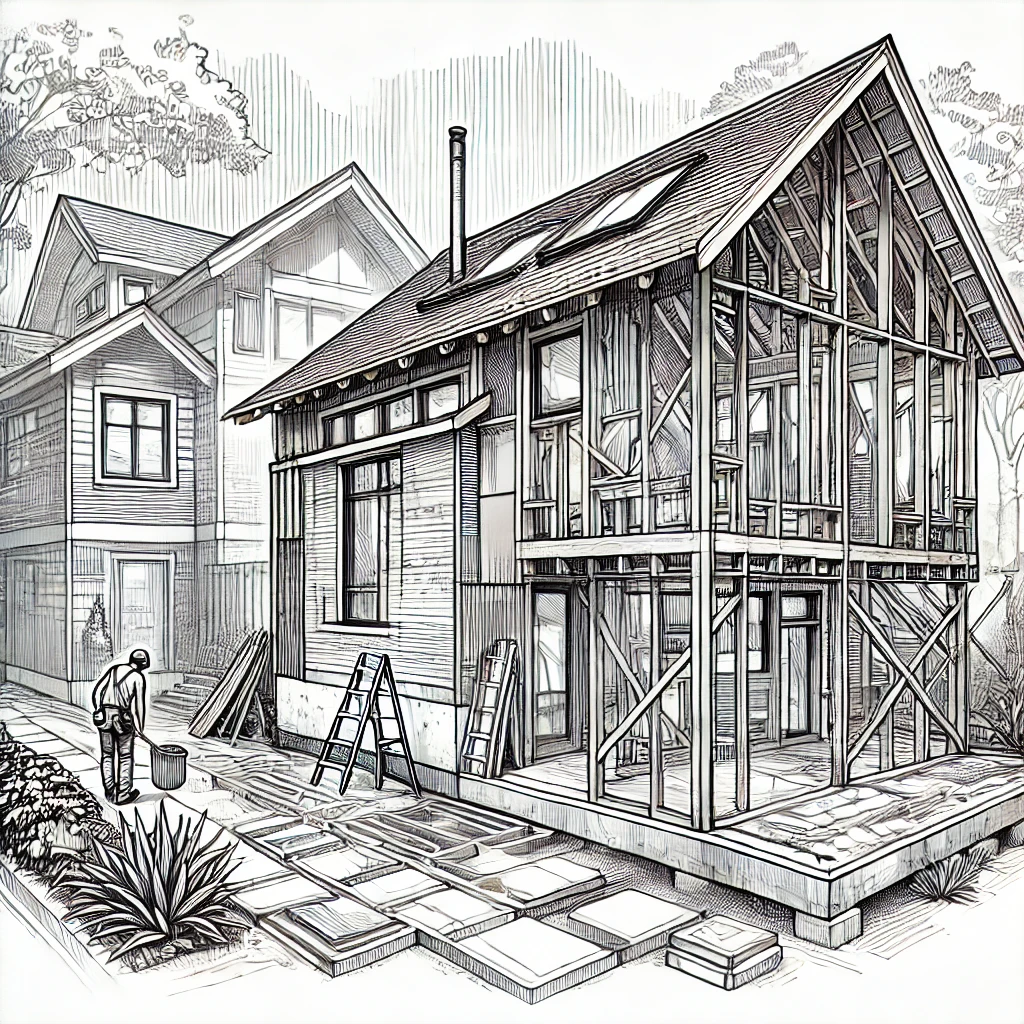Building a custom ADU is a fantastic way to add value and functionality to your property, and allows you to tailor every aspect to fit your unique needs.
Let’s explore the process, from start to finish.
What Is a Custom ADU?
A custom ADU (Accessory Dwelling Unit) is a secondary housing unit that is specifically designed and built to your exact specifications.
Unlike pre-approved or standard prefabricated models, custom ADUs offer complete flexibility in terms of design, layout, materials, and features.
This means you can create a space that perfectly aligns with your vision, whether it’s a rental unit, a home office, or additional living space for family.
The Custom ADU Build Process
The build process for a custom ADU can be more challenging than a pre-designed or approved ADU, and it’s highly recommended to work with an experienced builder to make the process more streamlined.
Designing Custom ADUs
The design phase is where your vision begins to take shape.
Working closely with an architect or designer, you’ll plan the layout, choose materials, and integrate features that meet your specific needs.
Presite can be used here to try out custom floor plans and designs as well.
This phase also includes considerations like energy efficiency, space optimization, and aesthetic preferences.
Custom designs offer unparalleled flexibility but require careful planning to ensure everything fits seamlessly with the existing property.
Getting Approval
One of the most critical steps in the custom ADU build process is obtaining the necessary approvals and permits.
Since custom ADUs are not based on pre-approved designs (see examples here for Los Angeles), the approval process can be more time-consuming.
You’ll need to ensure that your plans comply with local zoning laws, building codes, and any other regulations specific to your area. This might involve multiple revisions and meetings with local authorities, so patience and persistence are key.
Construction
Once all the boring stuff is out of the way, you can actually get started with construction.
This phase involves everything from site prep and laying foundations to the actual build and fitting out.
The timeline for construction varies a lot depending on the size of the project and how ‘custom’ you want it to be – regular contact with the project manager is crucial here.
Cost
It’s super important to consider your cost, especially if you plan to sell or rent out your custom ADU at some stage.
Custom ADUs can range anywhere from $100,000 to $250,000 or more in total, and this broad range is thanks to the variety of designs that are possible.
It’s important to set a realistic budget and explore financing options such as home equity loans, refinancing, or specialized ADU loans. Understanding the full scope of costs upfront can help you plan effectively and avoid surprises.
Benefits of Custom ADUs
Custom ADUs have a lot of benefits – with the main one being that you can design the space exactly how you want it, and you’re not forced to use a pre-approved design.
Flexibility in Design
One of the main advantages of a custom ADU is obviously the flexibility that comes with the design.
Most ADUs are built using standard plans which are issued by the local government, but custom ADUs completely break this mould.
This means your custom ADU will not only stand out, but it could also be worth significantly more due to this,
Maximizing Property Value
A well-designed custom ADU can significantly increase the value of your property.
By offering additional living space that is perfectly integrated with the main home, a custom ADU makes your property more appealing to future buyers.
Potential Downfalls
With any construction project, there can be problems, and this is especially true for custom ADUs.
Here are the main downfalls you need to look out for.
Approval Problems
One of the obvious problems is getting approval.
All ADUs need to be approved and meet the requirements to do so, these include things like maximum size, amenities, and so on. If you want more detail, this page on the California Department of Housing is a good place to start.
This can be avoided quite easily by working with an experienced builder who has worked on custom ADU projects in your specific area; the only issue here is that this can be hard to find.
Construction Timeline
Another potential hurdle with custom ADUs is that the construction timeline can get stretched, especially if you have chosen very specific custom elements that require certain materials or expertise to install.
Like before, opting for an experienced builder will make all the difference.
Wrapping It Up
Building a custom ADU is a rewarding project that allows you to create a space tailored to your specific needs.
From the initial design phase to obtaining approvals and managing construction, each step requires careful planning and execution. The result is a unique, valuable addition to your property that offers both immediate and long-term benefits.
Here’s a quick recap:
- Custom ADUs allow for personalized design and increased property value.
- The build process includes designing, obtaining approvals, and construction, each requiring careful planning.
- Custom ADUs can be expensive, but it’s usually worthwhile to build one both from a personal use and investment point of view.
Hopefully, this guide has given you everything you need to know about custom ADUs. Please get in touch if you have any other questions about a custom ADU project, and consider using Presite to play around with custom ADU floor plans.
